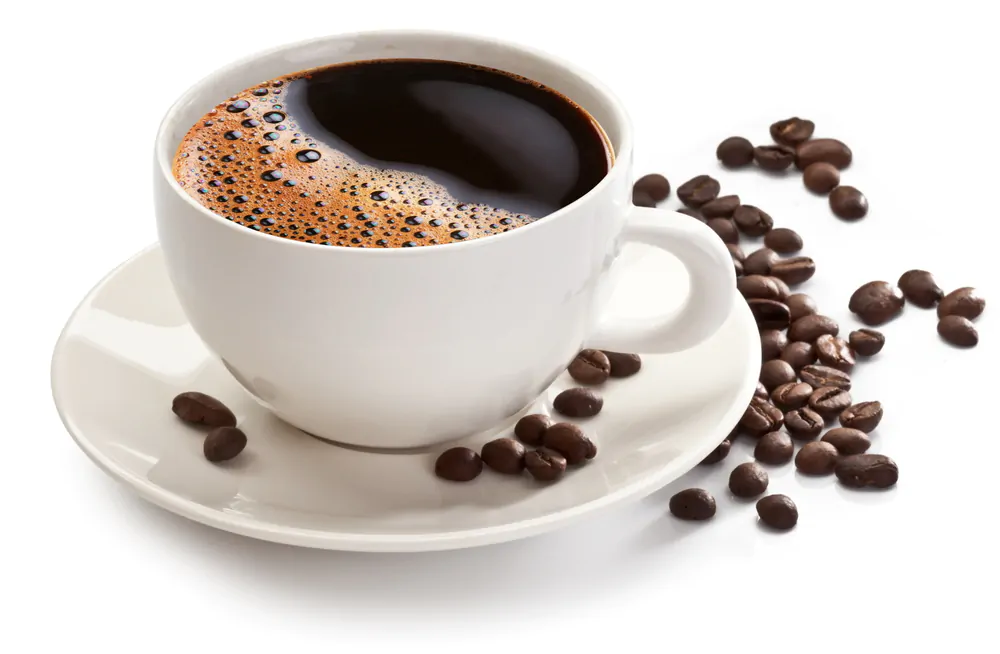Do you think you’re using the right mug for your cup of Joe? Find out what are the best materials for coffee cups and upgrade your coffee drinking experience.

Does a coffee cup really matter? I recently saw this question somewhere, and I realized that most of us don’t really pay much attention to the mugs we use when having our coffee.
When you receive that steaming mug from your ever-smiling barista at your local coffee place, do you ever take your time to look at the cup it is served in? If you don’t, you’re missing a lot. Let’s find out why.
Why Does A Coffee Cup Matter?

As usual, I did some research and found out that even the color affects your perception of the contents in your coffee cup. According to a 2012 survey, all our senses are engaged in an area of the brain that impacts how our brain interprets flavor. Generally, hot drinks in white ceramic cups send the idea that the beverage is creamier and sweeter.
How the cup feels in your hands also plays a massive role–the firmer the cup, the better the perceived taste. With that in mind, let’s explore the best materials for coffee cups, but before that, let’s learn the general barista rules for choosing the right coffee mug.
How To Choose The right Mug–Barista Tips
When choosing a coffee mug for home, office, and travel, there are so many things to consider, such as size, material, type of lid, how you will be using it, and the design. While these factors are essential, it’s not easy to choose a coffee cup due to the sheer variety of options.
More than 62% of Americans drink coffee every day. That means more mugs production.
Baristas have a completely different and straightforward approach to picking the right mug for your favorite beverage. Here are the questions they ask when selecting a suitable cup for coffee.
- What type of coffee is being served, cold or hot brew?
- Reverse or flat, domed shape?
- Does it retain heat and aroma?
- Does it absorb fluids?
- Does it have a thick smooth rim or a thin sharp one?
What Are The Best Materials For Coffee Cups?

Buying the best coffee mug is mainly associated with knowing the best materials. It’s okay to have your personal preference, but particularly essential if you’re a coffee purist to drink coffee from the right cup. So, what is the best coffee cup made up of?
You may also be interested in our guide on the 10 types of coffee packaging.
Many people go with ceramics for several reasons. Let’s discuss some of them while also exploring other materials and why they’re not suitable.
1. Ceramic
While the material is quite crucial in determining how you enjoy your coffee, there isn’t much debate about the best materials for coffee cups as there is always one winner–ceramic. To start with, ceramics don’t affect the taste of your coffee. It does not release or add flavors into your cup, meaning that you enjoy your cup as you wanted it to be.
Another great feature about ceramic materials is that they retain heat and keep your coffee hot for longer than other materials. So you don’t have to worry about heating the coffee to keep it at your desired temperature. Ceramic mugs are durable, easy to clean and come in different styles and colors to suit your drinking experience.
2. Plastics
Plastic cups are not the best cups to use for hot beverages. While they are cheaper, lightweight, and durable, they come with several negatives that affect your health, the taste of your coffee, and the overall coffee-drinking experience. Firstly, the coffee’s natural oils end up getting trapped in plastic cups, which significantly affects the flavor.
Secondly, plastics are not environmentally friendly, and they release toxic compounds when used to heat coffee in a microwave. Finally, they get extremely hot and can scald your hands.
3. Glass
Coffee mugs made of glass can be quite stylish and fashionable. They allow you to have a full view of your drink from top to bottom. The glass materials are neutral, which means your coffee will taste and smell as it should.
They’re pretty easy to clean and maintain, and most options can be used in a microwave and dishwasher. However, its inability to conduct heat makes it challenging to keep your brew hot, but you can always find thicker options.
It is also heavy and breaks easily. Don’t forget to protect your dear fingers.
4. Stainless steel
Stainless steel cups do a great job of keeping your coffee hot for more extended periods. That’s why we have many stainless steel travel mugs.
They are durable, non-porous, and great heat retainers. However, they’re pretty expensive and often alter the taste of your coffee due to metal material leaching into the coffee.
5. Melamine
Melamine is not widely known in the coffee industry. However, this material is one of the best as it is affordable, durable, and easy to clean by hand or dishwasher.
Melamine keeps your brew hot without scalding your hand. However, it is not microwave friendly as it is susceptible to breaking when reheated.
Final Thoughts On What Are The Best Materials For Coffee Cups
Finding the best coffee mug material is as critical as finding the right coffee. Based on features, ceramic material generally outshines its counterparts in many ways, but that doesn’t mean you cannot enjoy coffee with other choices. I highly recommend assessing your coffee drinking habits, lifestyle, and type of coffee you drink most and pick a cup that fits your needs.
For instance, if you travel a lot, stainless steel materials may be the ideal mug for you. You can have more than one mug, so don’t be afraid to explore different varieties.
